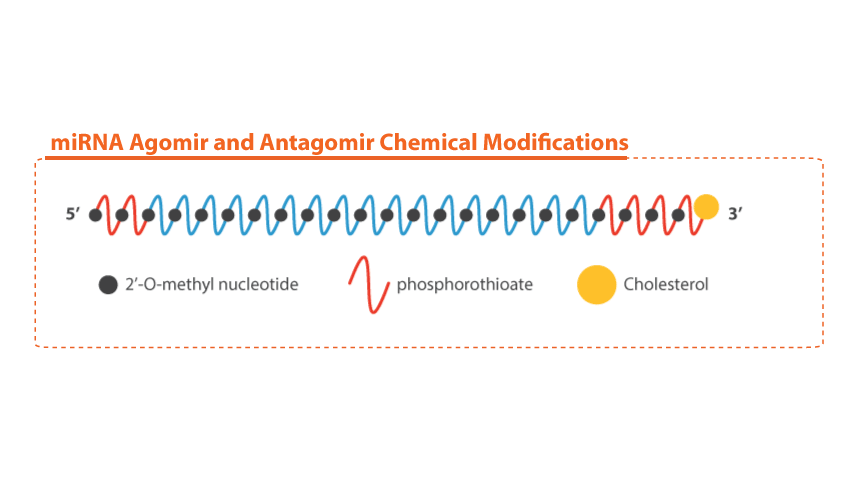Synthetic miRNA Mimics and Agomirs
miRNA Mimics are chemically synthesized, double-stranded miRNA-like RNA which are designed to copy the functionality of mature endogenous miRNA upon transfection. Also available are miRNA Agomirs, a type of miRNA mimic with chemical modifications to prevent degradation and increase transfection efficiency.
miRNA mimics and agomirs bind to the 3'UTR of genes to knock down native gene expression in cells. They can be used for functionality assessments and serve as useful exogenous tools for gain-of-function studies.
Key Features
- We offer a collection of synthetic miRNA Mimics and Agomirs for over 5000 mature miRNAs from human, mouse, and rat.
- Synthetic miRNAs are easily transfected into many cell types for immediate gene knockdown.
- Agomirs have chemical modifications to increase transfection efficiency and stability.
Popular in This Category
Additional Resources on RNAi Technology
Search miRNA Library
Synthetic miRNA Library
We offer synthetic miRNAs for human, mouse and rat, in the form of agomirs or mimics.
Can’t find the miRNA or inhibitor you’re looking for? Request a custom miRNA construct with technical@abmgood.com.
Product Information
Documents
Top Publications
| 01 | MicroRNA-377 Regulates Mesenchymal Stem Cell-Induced Angiogenesis in Ischemic Hearts by Targeting VEGF. Wen, Z et al. Plos One 9 (9):e104666 (2014). doi:10.1371/journal.pone.0104666 |
| 02 | MicroRNA-146a induces immune suppression and drug-resistant colorectal cancer cells. Tumor Biology 39(5):1-12 (2017). doi:10.1177/1010428317698365 |
| 03 | Down-Regulation of eIF4GII by miR-520c-3p Represses Diffuse Large B Cell Lymphoma Development. Mazan-Mamczarz, K et al. PLoS Genet. 10(1):e1004105. (2014) doi: 10.1371/journal.pgen.1004105 |
FAQs
| What is the Sanger miRBase Sequence Database? |
|
miRBase is a sequence database that has been established by the Sanger Institute. Each entry in the microRNA Registry represents a predicted hairpin portion of a microRNA transcript (termed mir in the database), with information on the location and sequence of the mature microRNA sequence (termed miR). The database provides microRNA gene hunters with unique names for novel microRNA genes prior to publication of results and a searchable database of published microRNA.
|
| When was the latest update of your array sequences? |
|
The content of our arrays has been updated to miRBase Release 16.0.
|
| Can I quantify mature miRNA in total RNA using your cDNA synthesis and kit and qPCR master mix? |
|
Yes, that is what it is designed for.
|
| Does the profiling (qPCR) require a specific instrument or it can be done by every real time PCR instrument? |
|
Yes, We have a range of miRNA qPCR mastermixes available in optimized formulations for all qPCR machines, please see our web page http://www.abmgood.com/miRNA-qPCR-Mastermixes-microRNA-qPCR.html
|
| Do I need to use an internal control primer for quantitative detection of miRNAs (the same as housekeeping primers which we use in qPCR for mRNAs detection)? |
|
For human miRNA plates, the controls are as follows:
1) SNORD44, cat MPH00003 2) SNORD47, cat MPH00004 3) SNORD48, cat MPH00005 4) U6-2, cat MPH00001 |
| Which genes are targeted by a specific miRNA? |
|
You can search for predicted and validated miRNA target genes at http://mirbase.org/.
Just type in your miRNA name (eg. hsa-mir-145) or accession number in the search bar and look for the targeted genes. |




